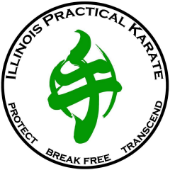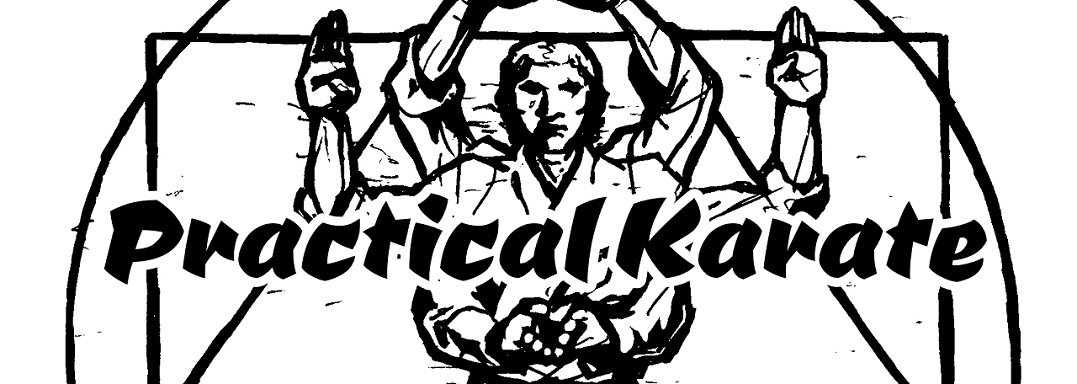-
Posts
2,826 -
Joined
-
Last visited
About Wastelander

- Birthday April 22
Personal Information
-
Martial Art(s)
Shorin-Ryu, Shuri-Ryu, Judo, KishimotoDi
-
Location
Salem, IL
-
Interests
Leatherwork, blacksmithing, writing, martial arts
-
Occupation
IT System Administrator
- Website
Recent Profile Visitors
The recent visitors block is disabled and is not being shown to other users.
Wastelander's Achievements

Black Belt (10/10)
-

KarateForums.com Awards 2025: Winners Revealed!
Wastelander replied to Patrick's topic in KarateForums.com Announcements
Thank you to everyone who voted, and congratulations to all of the winners! -
I have noticed that Uechi-Ryu tends to do a lot of isolation gripping, where they grab onto something and hold it in place, rather than pulling it. In that context, I think it makes sense to use hikite as a way of freeing up your hand to strike with it.
-

Do you teach everything?
Wastelander replied to Spartacus Maximus's topic in Instructors and School Owners
Oh, it's definitely controversial. Some people get REALLY mad about it. My view, though, is similar to Yabu Kentsu, who said "if you have time to practice Pinan, practice Kusanku, instead," although there is also material from Passai and Chinto in the Pinan series. Basically, the Pinan kata were developed by Itosu for his school PE karate program, and while they do have valid and effective applications, almost all of those applications can be found in the older kata. Additionally, I've found that teaching the Pinan series and then teaching Kusanku, Passai, and Chinto actually makes it MORE difficult for students to learn the older kata, not less, as is often claimed. It takes a long time for them to be able to stop mixing up the kata, because there are such similar sequences. I don't have any issue with the concept of yakusoku kumite, but the way that most yakusoku kumite is designed is just bad. The distance is too large, the techniques are applied impractically, the attacks are unrealistic, etc. -

Do you teach everything?
Wastelander replied to Spartacus Maximus's topic in Instructors and School Owners
Yes and no. My late Sensei had to teach the full curriculum of the organization we were in, but he wanted to trim it down. Since I left the organization, I trimmed it down the way he and I discussed. This does technically mean that I don't teach everything that he taught me, at least not entirely, but most of the material was redundant, or simply not as effective as what was kept. For example, I made the Pinan kata my youth curriculum, and I don't teach them to adults, at all, but I do teach them at seminars, and most of the techniques in them can be found in kata that I kept for adults. I also got rid of Passai Sho and Kusanku Sho, but again, most of that material is also found in other kata. I dropped the formalized yakusoku kumite drills, because they were a waste of time. -
Wastelander started following The Shindokan Deflection and Hikite (Pulling Hand) Usage
-
Haisai, everyone! Hikite (pulling hand) is always a controversial topic within the karate community, it seems, but I was curious to see how people are actually utilizing it in their training. I've created a poll to collect that information, and if I've missed anything, feel free to add to the conversation!
-

Nunchaku Bunkai, Kobu Nunchaku
Wastelander replied to ModernHojoUndo's topic in Martial Arts Weapons
We only put a couple examples up on YouTube that are easy to find. There are some clips from classes and seminars floating around that show a couple more applications, but they were posted to various social media platforms, so they're harder to find. -

Nunchaku Bunkai, Kobu Nunchaku
Wastelander replied to ModernHojoUndo's topic in Martial Arts Weapons
Thank you for sharing! Kobudo is rarely looked at through a practical lens, since most people are not carrying around bo, sai, tonfa, etc. on a daily basis for self-defense (although many of the techniques for those weapons can be transferred to other, everyday items). Nunchaku are especially neglected on this front, as they typically get more exposure as tricking implements than actual weapons. While I didn't learn these particular applications for the nunchaku, my late Sensei did teach a number of grappling techniques using them, implementing them for leverage and pain compliance, similar to what you have going on in this video, in addition to their striking applications. -

rank is individual and personal
Wastelander replied to Spartacus Maximus's topic in General Martial Arts Discussion
I have separate belt systems for kids and teens/adults. For my youth program, the minimum time-in-grade requirements are: 10th Kyu - White 9th Kyu - Orange/White Stripe - 4 months 8th Kyu - Orange - 4 months - 2 peer model selections 7th Kyu - Orange/Black Stripe - 6 months - 2 peer model selections 6th Kyu - Blue/White Stripe - 6 months - 4 peer model selections 5th Kyu - Blue - 8 months - 6 peer model selections 4th Kyu - Blue/Black Stripe- 10 months - 10 peer model selections 3rd Kyu - Green/White Stripe - 12 months - 12 peer model selections That brings you to a total of a little over 4 years, at the bare minimum for someone to progress from white belt up to 3rd Kyu, and that's just the highest I allow kids to reach. After they are at least 14, they can move on to the adult curriculum at 4th Kyu if they haven't completed the youth curriculum, or they can join at, essentially, a probationary 3rd Kyu if they have completed the youth curriculum. As you can see, I also have a "peer model selections" requirement, which is how many times during the time-in-grade period I select them to come up in front of the class to be the example. I've found that this helps build confidence in the kids, and gives them an incentive to work hard in class. The adult requirements are different, as I only have 4 Kyu grades, and 1 Dan grade: 4th Kyu - White - At least 14 years old 3rd Kyu - Yellow - 12 months 2nd Kyu - Green - 16 months 1st Kyu - Brown - 24 months - 40 teaching hours 1st Dan - Black - 48 months - 100 teaching hours - At least 18 years old That brings you to a total of a little over 8 years to go from white belt to black belt, or potentially a total of 11 years if you progressed through the entire youth curriculum, first. You'll notice that I do require some teaching hours for 1st Kyu and 1st Dan. This is because I am a strong believer in the "when one teaches, two learn" philosophy, and I think it is good for more advanced karateka to be comfortable with at least teaching the basics. Instead of doing more Yudansha grades above 1st Dan, I simply have 1st Dan, and a Shidoin (Instructor) certification. The Shidoin certification isn't a rank, but is more like an old-school Menkyo Kaiden, and means that you have been certified to teach my entire curriculum (both the youth and teen/adult programs, as well as KishimotoDi). There is no time-in-grade requirement for this, but it is a learning and assessment process that I work out with students on an individual basis after they have achieved their black belt. -
While we didn't necessarily break it down this way, my late Sensei taught very similar methodologies attached to our Shorin-Ryu. We often used the term "block" because it is what so many people are used to, but we taught that it was so much more than "blocking," and that it was generally used to deflect and control the opponent. I look forward to the rest of your breaktdown!
-
On the mainland, you could also reach out to Joe Swift. His account on Facebook is Dojo TokyoMushinkan.
-
Well, I can say that Shito-Ryu isn't very popular on Okinawa, as it's really more of a mainland Japanese style, but there are quite a few dojo on Okinawa that are open to the public. The Karate Kaikan actually has a program to connect visitors with dojo on Okinawa, but you need to register right away, because they ask for 2 weeks' notice: https://karatekaikan.jp/en/pages/experience-program-karate Aside from that, you can try connecting with other karateka visiting Okinawa and see if they will let you tag along when they go to training. These personal connections are generally the best way to go, but can be difficult if you don't already know people on Okinawa. You can start by reaching out to James Pankiewicz, who runs the Asato Dojo and BujinTV, as he has lots of connections and knows a lot of people who might be able to help you out. Alternatively ,you can ask a taxi driver to take you to a karate dojo they know about and just show up asking respectfully to train. I don't generally recommend the "show up and ask" approach unless you have exhausted your other options.
-

Age requirements to reach Black Belt?
Wastelander replied to KarateKen's topic in General Martial Arts Discussion
Black belt ranks are a strange thing. On the one hand, in Japan/Okinawa, the Shodan rank isn't a big deal, since it just means you have learned the basics in your system, and it isn't uncommon to achieve it in 2-4 years. On the other hand, because of the way karate was introduced to the West, the importance of the Shodan rank was inflated, and the length of time to earn it was extended, so it was more common to have to train very hard, learn more material, and spend 5-8 years training to earn it. On the other-other hand, we have McDojos and belt mills cheapening the accomplishment of earning the Shodan rank to something you just pay for in advance, and we have Brazilian Jiu-Jitsu establishing the belief that a black belt means you have mastered the art and takes 10+ years to earn. That's a lot of very different perspectives on what a black belt rank means, and what it takes to earn. There is no universal standard across all arts, of course, but there also is no universal standard WITHIN any given art. Judo and BJJ usually use competition success as a fairly objective benchmark for their ranks, but outside of that, you're generally going to be seeing very different standards in every school, even among schools that do the same style, or which are part of the same organization. Any rank only has value within the school it is issued, and to a degree within the organization it is issued, but that's about it. Now, all that said, I personally do not like the idea of giving minors black belt ranks. Regardless of how Shodan is perceived in Japan/Okinawa, I am in the US, and the way we look at Shodan tends to be more akin to the way Sandan is seen in Japan/Okinawa. Plus, my late Sensei had the same requirements for his Shodans that the organization we were in had for GODAN, minus the minimum age and time-in-grade requirements, and it generally took an average of 8 strong years of training to earn a Shodan under him. He did issue junior black belt ranks a couple of times, but the youngest person my Sensei ever tested for a proper Shodan rank was 17, and that kid tested right alongside me, having to do the exact same test as a full-grown man in his mid-20s. I would say that it's pretty rare for a 17 year old to be able to do that, but it's possible, and I'm willing to make the exception here and there, but as a general rule, I prefer not to promote anyone under the age of 18 to Shodan. I want my students to have an adult level of understanding, skill, and maturity to go along with the rank. -
Well, I can't really speak to the organization as a whole, but I've known some folks who trained in Shidokan Shorin-Ryu, and I actually just took an online seminar with Nakayama Takafumi Sensei of the Shidokan. I get the impression that most Shidokan folks do affiliate with the honbu on Okinawa in a similar way to what I saw when I was in the Shorinkan (founded by Nakazato Shugoro, another of Chibana's senior students). They get the broad curriculum from the honbu, but are able to add what they see fit.
-

No bunkai until shodan?
Wastelander replied to Spartacus Maximus's topic in General Martial Arts Discussion
It is my understanding that kata oyo, and the bunkai process by which you derive them, weren't taught all that much by Funakoshi Gichin, and which were almost entirely left behind by Funakoshi Gichin's son and his contemporaries, so that by the end of WW2 pretty much everyone doing Shotokan wasn't learning oyo or bunkai. After WW2, the Okinawans needed to rebuild, and teaching karate to the soldiers stationed there was one way to get the money for that, but many of those soldiers had friends stationed on mainland Japan learning Shotokan, and so that's the sort of karate they wanted to learn. At least some of the Okinawan instructors during that era stopped teaching kata application because their students simply weren't interested in it. They also tended to issue those soldiers yudansha grades between 1st and 3rd Dan during their tours of duty, with the expectation they would come back to Okinawa to continue their education, and that's probably where the "bunkai is for black belts" thing really came about. Most likely, those soldiers just didn't learn kata application while stationed on Okinawa, and only picked it up later, and so they assumed it was black belt material, or they made their students wait until black belt to learn it so they could market it as some sort of "secret knowledge." Now, personally, I think this is a terrible approach, even as an attempt at retaining students. We all know that most people who train in martial arts who make it past the first year will still end up quitting when they earn their black belt, and that happens regardless of where you stick the "secret knowledge" of your curriculum. All this ends up doing is producing a bunch of people who trained in karate long enough to earn a black belt who have no idea how to actually use the classical material of the art, which makes karate look watered down, outdated, and ineffective. On top of that, it is cheating the individual students out of valuable skills for self-defense! My late Sensei taught application right along side the kata, and I do so, as well. This has left just about every student we've ever had with not only a better understanding of the art, but more appreciation for it, and an awareness that there is more to karate than point fighting tournaments and Kyokushin. -
Welcome to the forums!






